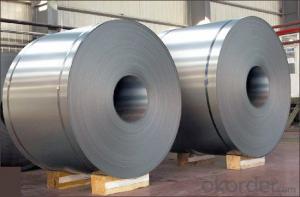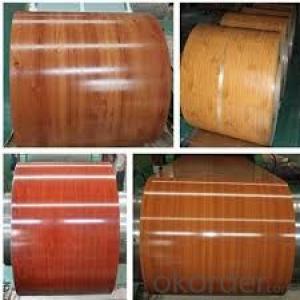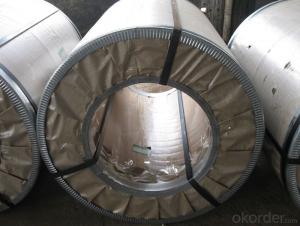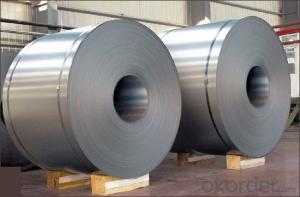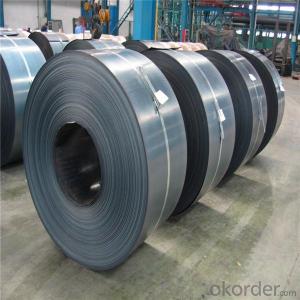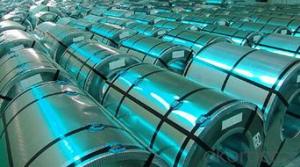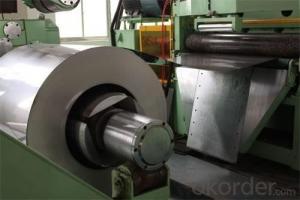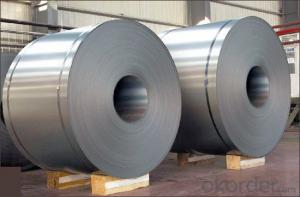Chinese Best Cold Rolled Steel Coil Good Visual Effect with Low Price
- Loading Port:
- China main port
- Payment Terms:
- TT OR LC
- Min Order Qty:
- 50 m.t.
- Supply Capability:
- 10000 m.t./month
OKorder Service Pledge
OKorder Financial Service
You Might Also Like
Chinese Best Cold Rolled Steel Coil Good Visual Effect with Low Price
1.Structure of Chinese Best Cold Rolled Steel Coil Description:
The raw material of cold rolled steel coil/sheet is high quality hot rolled product, and after pickling continuous rolling, degreasing, annealing,skin pass,slitting and cut to length line etc. Along with it many kinds of new technology and new process of global cold rolling production have been applied. Therefore the quality of the goods could be guaranteed. The product is widely used in outdoor and interior decoration, furnishing manufacturing, home appliance, automobile etc.
2.Main Features of the Cold Rolled Steel:
• Excellent process capability
• Smooth and flat surface
• Workability, durability
• Excellent heat resistance performance
3. Cold Rolled Steel Images
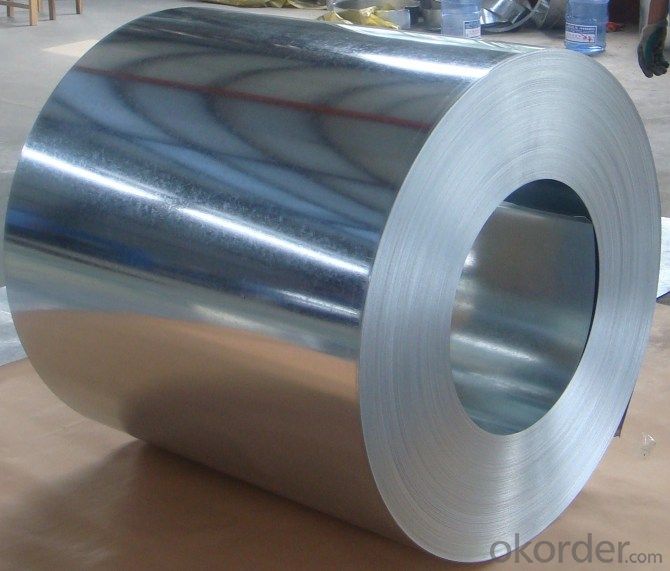
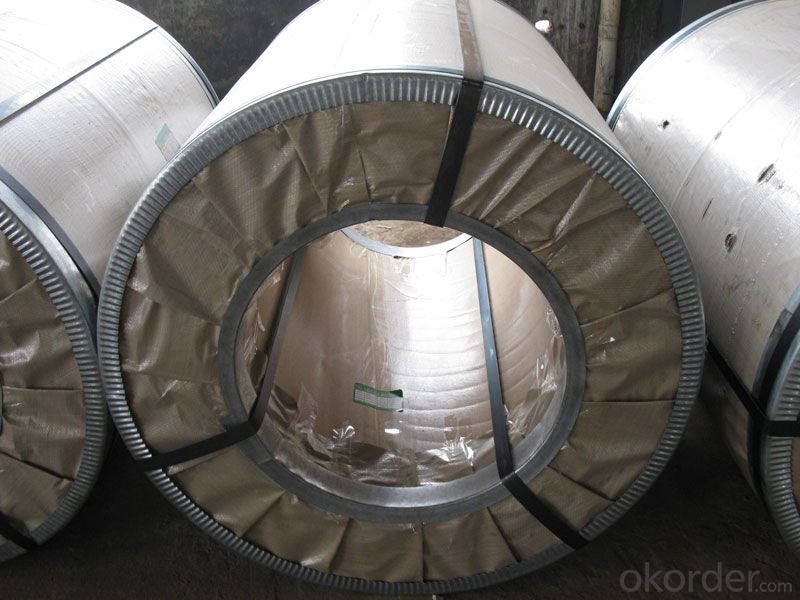
4.Cold Rolled Steel Specification
Standard:AISI,ASTM,DIN,GB,JIS,JIS G3302 ASTM 653M EN10142
Grade: Q195~Q345
Thickness: 0.16mm~2.0mm
Width: 1250mm MAX
Coil weight:3-12 MT
Coil ID:508/610mm
FAQ
1.How to guarantee the quality of the products?
We have established the international advanced quality management system,every link from raw material to final product we have strict quality test;
2. How long can we receive the product after purchase?
Usually within thirty working days after receiving buyer’s advance payment or LC. We will arrange the factory manufacturing as soon as possible. The cargo readiness usually takes 15-25 days, but the shipment will depend on the vessel situation.
- Q: How do steel coils contribute to seismic resistance in structures?
- Steel coils contribute to seismic resistance in structures by providing strength, flexibility, and energy dissipation. When steel coils are incorporated into the structure's design, they act as seismic dampers, absorbing and dissipating the energy generated during an earthquake. The coils help to distribute and reduce the seismic forces, minimizing structural damage and enhancing the overall stability and resilience of the building. Additionally, the flexibility of steel coils allows them to withstand forces without breaking, ensuring the structure's integrity and safety during seismic events.
- Q: What are the different methods of annealing steel coils?
- The different methods of annealing steel coils include full annealing, process annealing, spheroidize annealing, and stress relief annealing.
- Q: How can defects in steel coils be detected?
- Defects in steel coils can be detected through various methods such as visual inspection, ultrasonic testing, magnetic particle inspection, eddy current testing, and radiographic testing. These techniques help identify surface defects, internal flaws, cracks, or any other abnormalities that may affect the quality and strength of the steel coils.
- Q: How do steel coils contribute to the agricultural sector?
- Steel coils contribute to the agricultural sector by being used in the manufacturing of agricultural machinery and equipment. These coils are used to create components such as plows, harrows, tillers, and seeders, which are essential for cultivating, planting, and harvesting crops. The durability and strength of steel coils make these agricultural machinery and equipment more robust, reliable, and efficient, thereby improving productivity and ensuring higher crop yields.
- Q: How do steel coils perform in extreme weather conditions?
- Steel coils are designed to withstand extreme weather conditions due to their durability and strength. They are often coated or galvanized to protect against corrosion, making them highly resistant to rust and other forms of weather damage. Additionally, the structural integrity of steel coils allows them to withstand high winds, heavy precipitation, and temperature fluctuations without significant deformation or damage.
- Q: What are the common applications of coated steel coils?
- The excellent properties and versatility of coated steel coils make them suitable for a wide range of applications in various industries. Some common uses of coated steel coils include: 1. Construction industry extensively employs coated steel coils for roofing, cladding, and wall panels. The coating ensures long-lasting structures by providing superior corrosion resistance, durability, and weatherability. 2. In the automotive industry, coated steel coils are widely used for manufacturing body panels, bumpers, and chassis parts. The coatings enhance aesthetics, protect against corrosion, and improve paint adhesion for a flawless finish. 3. Coated steel coils find utility in the production of household appliances like refrigerators, washing machines, and ovens. The coatings provide an attractive, smooth finish while protecting the steel from moisture and environmental factors. 4. Heating, Ventilation, and Air Conditioning (HVAC) systems commonly utilize coated steel coils for manufacturing ductwork, air handling units, and heat exchangers. The coatings ensure resistance against corrosion and improve system efficiency. 5. The furniture industry also makes use of coated steel coils for manufacturing cabinets, tables, and chairs. The coatings provide a decorative finish while protecting the steel from wear and tear. 6. Electrical equipment production, including switchboards, control panels, and enclosures, involves the use of coated steel coils. The coatings provide insulation and protection against electrical conductivity, ensuring durability. 7. In the packaging industry, coated steel coils are used for manufacturing cans, containers, and closures. The coatings act as a barrier against moisture and prevent contamination, ensuring the preservation and safety of packaged products. In conclusion, coated steel coils offer corrosion resistance, durability, aesthetics, and protective properties, making them suitable for various applications across industries. From construction to automotive, appliances to furniture, and even in electrical equipment and packaging, coated steel coils play a crucial role in delivering high-quality products and ensuring long-lasting performance.
- Q: Why is steel used for building purpose and not any other metal?
- Steel is used over most other metals due to its desireable properties for buildings. To name a few: strength, hardness, ductility, conductivity, flexability, weight, ability to shape/mold, non-combustability, weather resistance and cost Many other metals have the same properties, only on different scales. For instance, copper may be an excellent conductor, howwever it's expensive and not very weather resistant. Aluminum may be flexible, moldable, but not very strong. The list goes on and on..
- Q: How are steel coils used in the manufacturing of braking systems?
- Steel coils are used in the manufacturing of braking systems as they are commonly used to make brake pads and brake rotors. Steel coils are processed and shaped into the required forms to create these essential components, which play a crucial role in the braking system's functionality and performance.
- Q: Have spent two days making a specialized knife out of 304 stainless steel, after throwing into a log it bent slightly arghhhh. Is it worth continuing to finish it off or start all over again with different kind of steel if so which kind should i use.
- Sorry okorder /... I hope that link works but as you can see you dont want to use 303.304.316,410,416,430 You can get away with 301 but would be best to use 440. It kind of sounds like your a home shop guy. It would be best for you to make a knife out of a1 or d2 tool steel. with these steels you can torch heat them to a red hot heat where a magnet will not stick to them. Then let them cool slowly in the air. After that you can temper in a oven around 400f. This will a very hard long lasting knife. Check OKorder for good steel prices. A1 and D2 are not stainless but they are the best for a home shop. If you go stainless you can buy preharden material but you will have to grind everything. You can also pay someone to harden your knife but dont plan on it being cheap.
- Q: How are steel coils used in the manufacturing of flooring materials?
- Steel coils are used in the manufacturing of flooring materials as they provide strength and durability to the flooring. The steel coils are often used as a base material for various types of flooring, such as vinyl, laminate, or engineered wood. These coils are processed and shaped into sheets or panels, providing a stable and sturdy foundation for the flooring materials. Additionally, the steel coils are also used for reinforcing concrete flooring, adding extra strength and preventing cracks or damage.
Send your message to us
Chinese Best Cold Rolled Steel Coil Good Visual Effect with Low Price
- Loading Port:
- China main port
- Payment Terms:
- TT OR LC
- Min Order Qty:
- 50 m.t.
- Supply Capability:
- 10000 m.t./month
OKorder Service Pledge
OKorder Financial Service
Similar products
Hot products
Hot Searches
Related keywords
